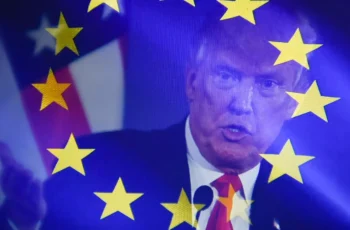President Trump’s imposition of 25% tariffs on steel and aluminum has sparked dismay and defiance from the European Union (EU), raising concerns about a potential trade war that could harm both sides. In response, the EU enacted countermeasures totaling approximately 26 billion euros ($28.33 billion) against U.S. goods. European Commission President Ursula von der Leyen emphasized that tariffs act as taxes that burden consumers and disrupt supply chains, leading to increased inflation on both continents.

While the EU’s retaliatory measures aim to stand firm against U.S. actions, the cost of this posturing may be significant. Continued tit-for-tat tariffs threaten to unravel trade agreements and the economic prosperity historically shared between the U.S. and EU. Despite political rhetoric, protectionist measures rarely benefit consumers, often resulting in higher prices and job losses in sectors reliant on trade harmony.
The U.S. and EU maintain the world’s largest trade relationship, with the EU holding a trade surplus of 155.8 billion euros ($159.6 billion) in 2023, complicating simplistic narratives about trade imbalances. Von der Leyen has expressed the EU’s openness to negotiation, but ongoing protectionist policies risk fostering economic isolationism, stifling innovation and entrepreneurship.
Isolationism could harm small businesses and limit consumer choices while threatening the Atlantic alliance. Politicians may frame tariffs as protective, but the reality suggests no side can truly “win” in a trade war, as rising costs will ultimately burden consumers. Both the U.S. and EU must reassess their positions, recognizing that cooperation and competition can coexist. The stakes are high, and the future of the global economy depends on a more collaborative approach to trade rather than adversarial posturing.


